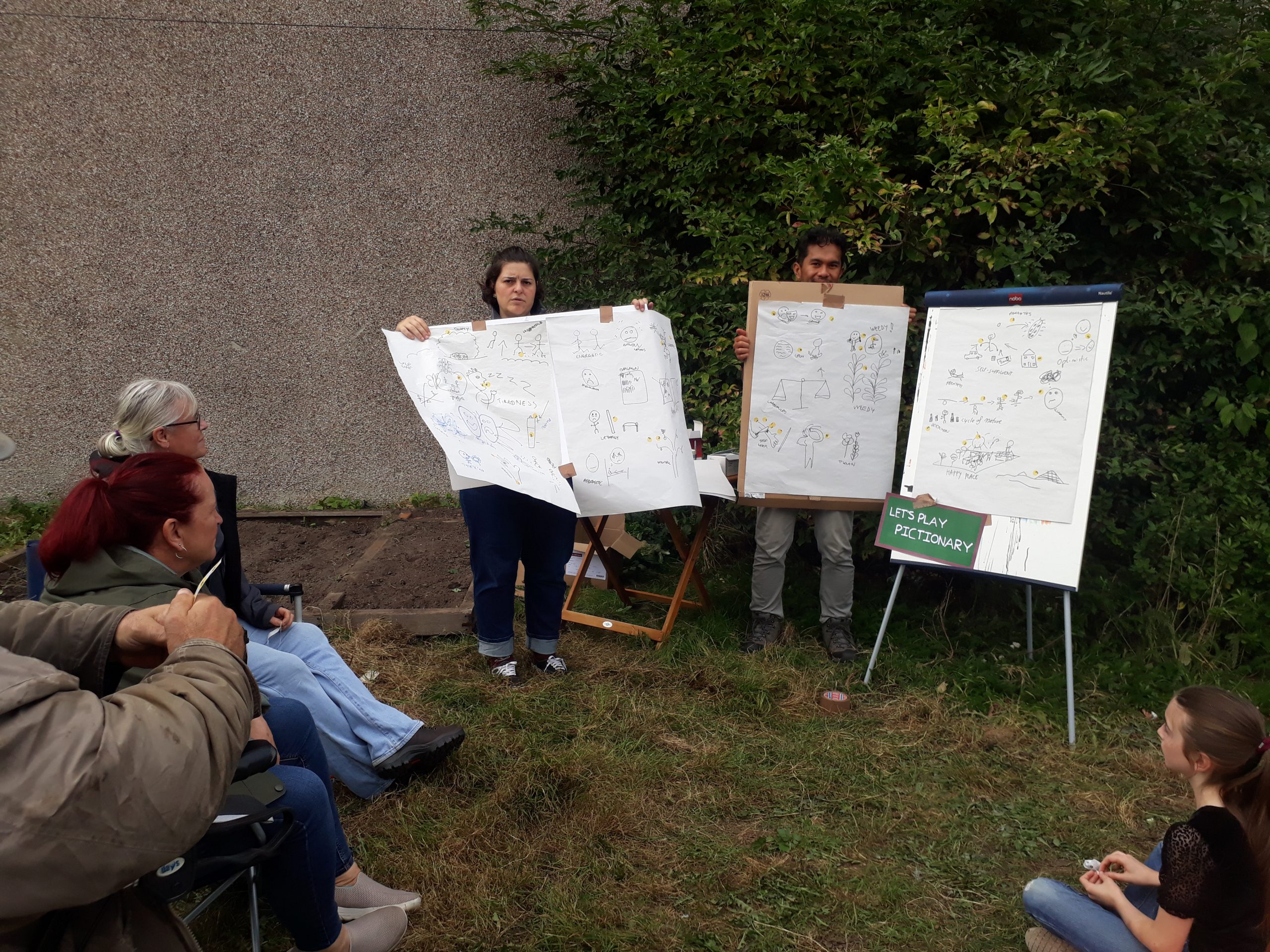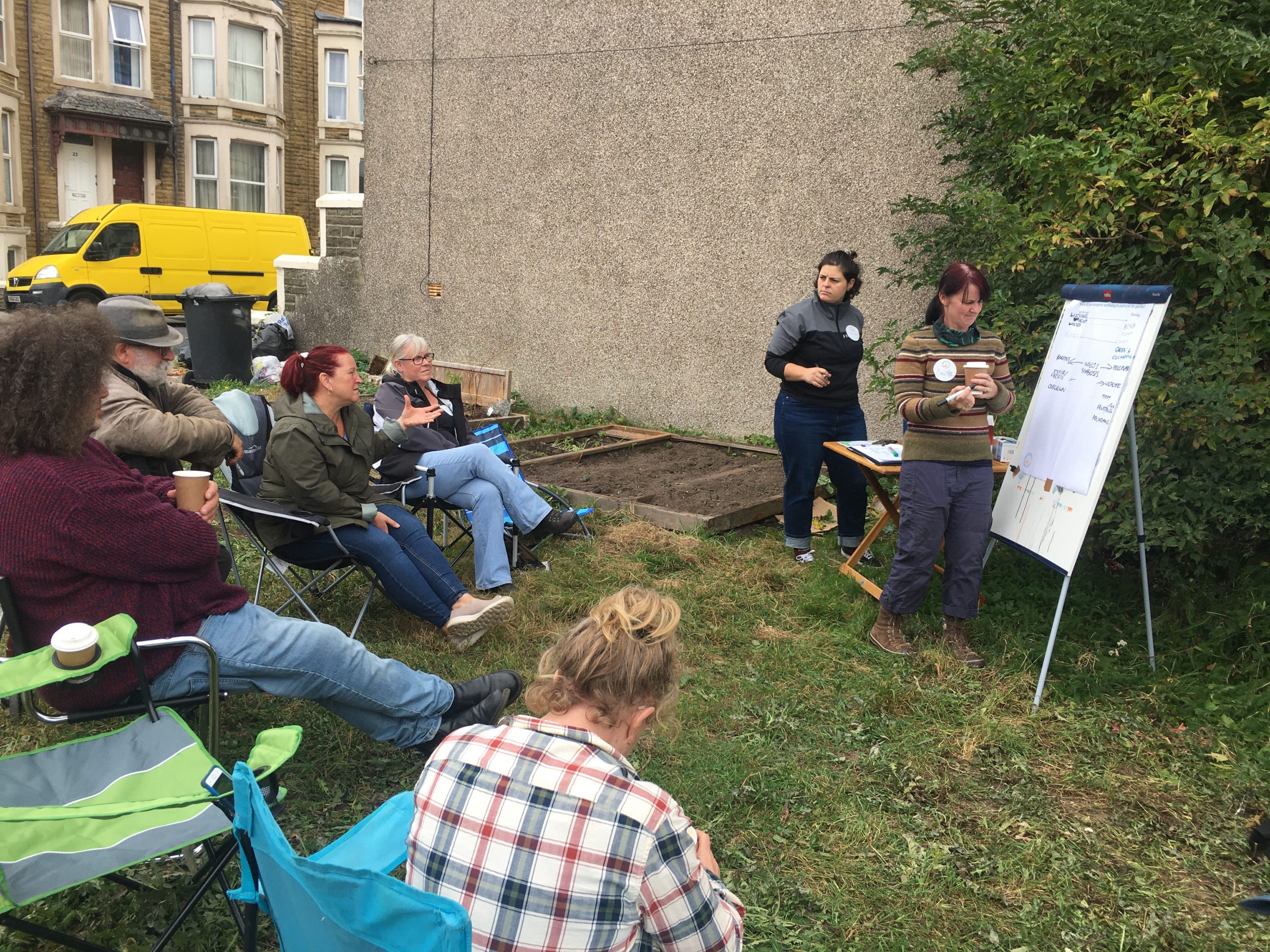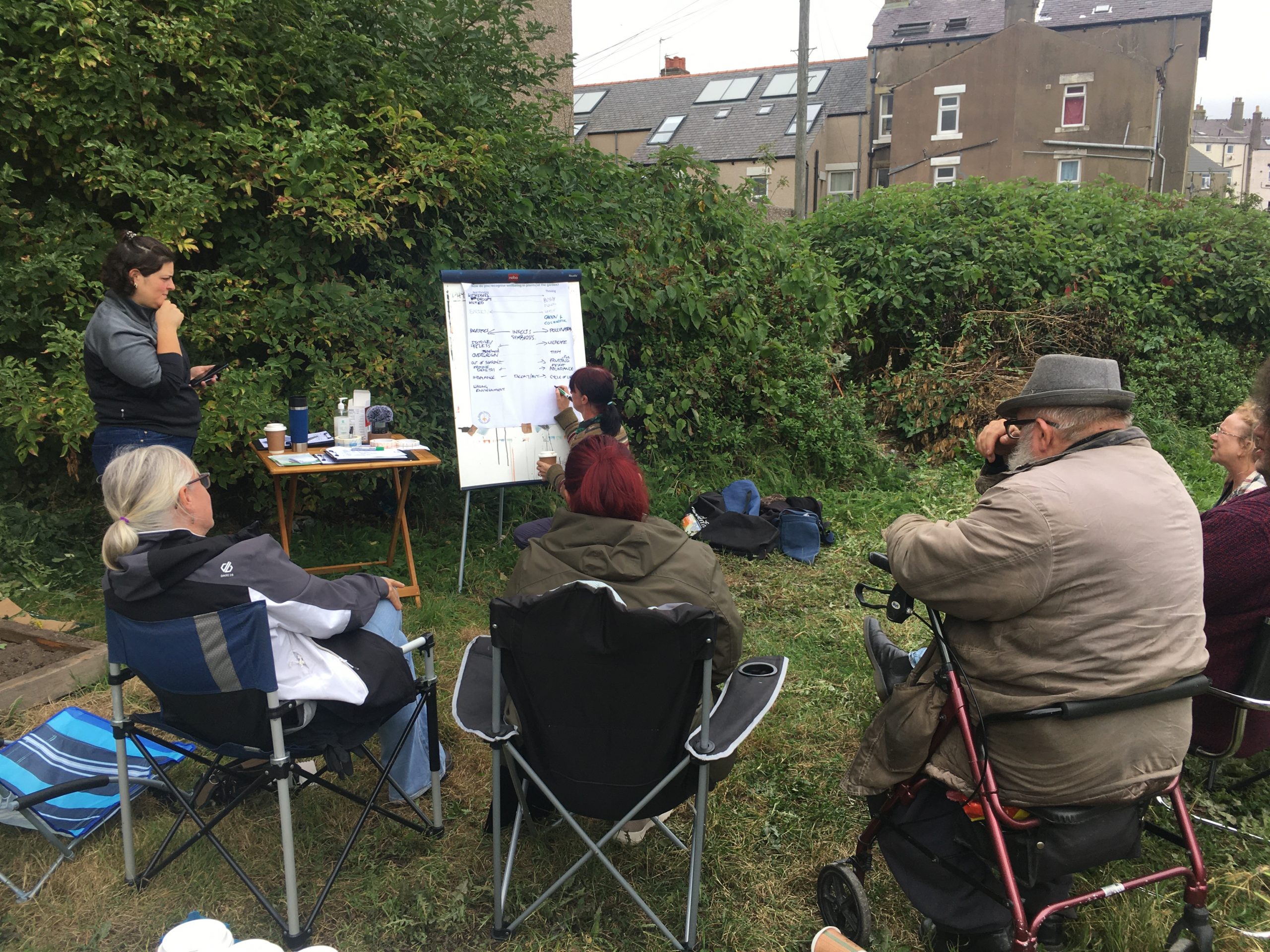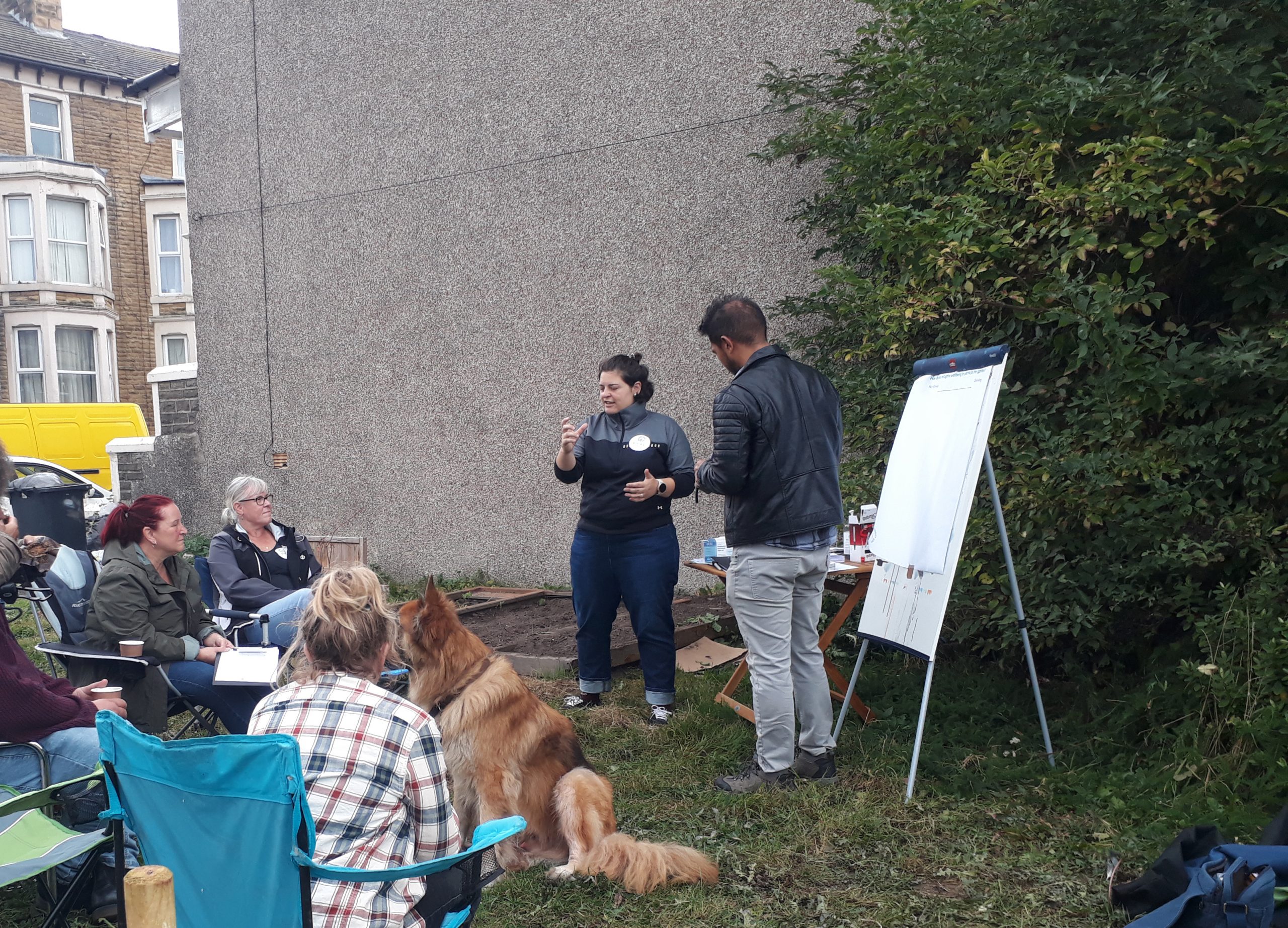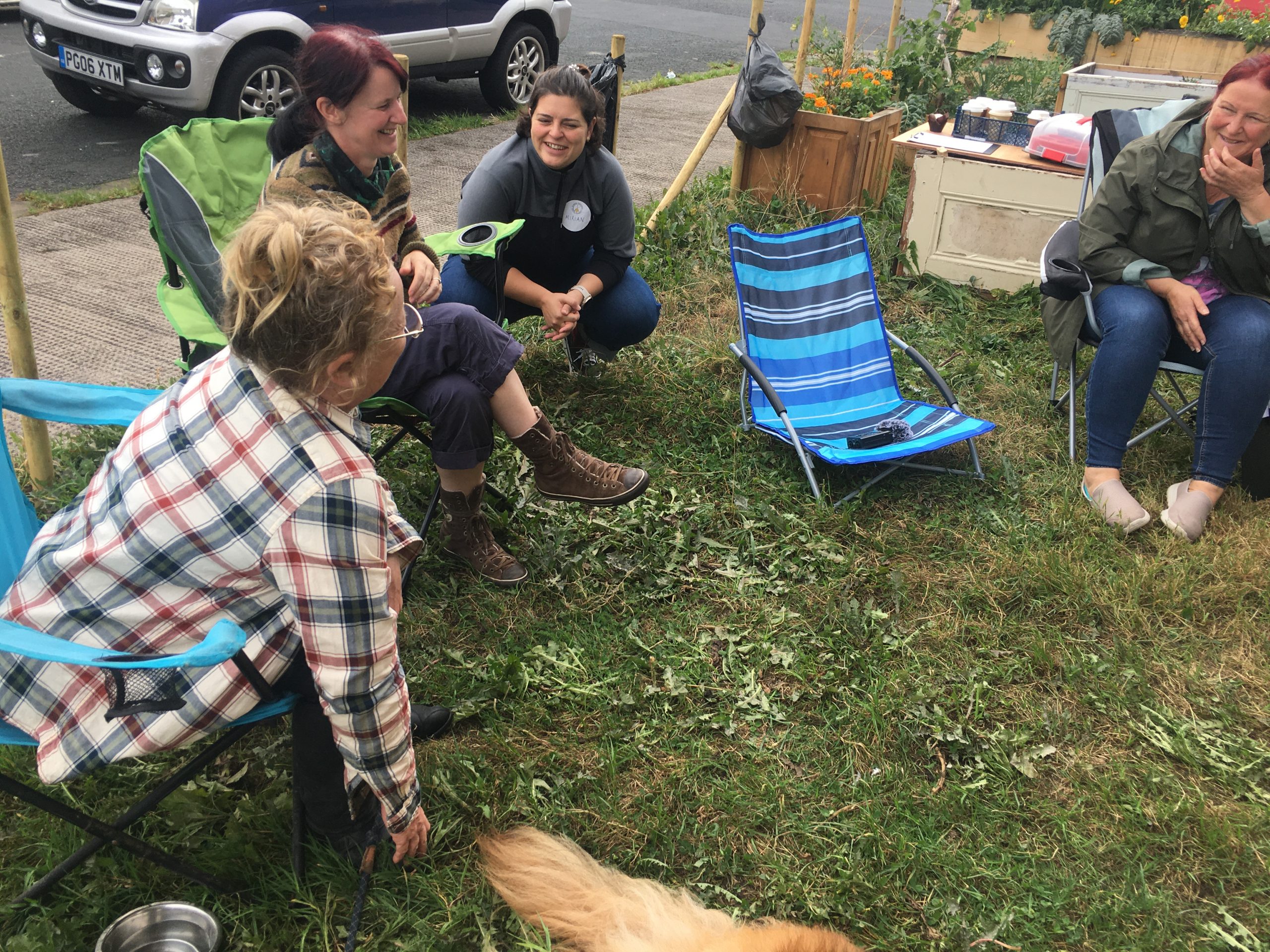We ran our second workshop focusing on exploring with the participants how to recognise thriving and also not thriving in plants and in people. We hosted the event at the site on the corner of Sefton Road and Cavendish Road in Morecambe with the help of our main partner, the Good Things Collective. Three participants attended the whole session, and during the afternoon two more participants came with three of their children, also, we managed to engage with three local residents, and one stayed with us.
We firstly began with a simple ice-breaker question- ‘Can you share a personal memory of being in a garden?’ We teamed participants up in pairs and they shared a memory related to their childhood and gardening. They shared their stories with the group. Many participants shared strong fond memories of being in a well-kept garden space with a loved one.
Next activity focused on recognising whether a garden or plants were thriving or not. Together, we came up with a list of words representing an aspect of a thriving garden or plants, and also we co-developed a list of ‘not thriving’ aspects of gardens and plants. We matched each “thriving word” with a “not thriving word”, co-constructing a local owned lexicon of wellbeing words for plants and gardens. Participants came up with their own words, for instance, a thriving garden word was “flowery” and its opposite was “wilted”. We did the same activity, but this time focusing on how to recognise wellbeing features (thriving or not thriving aspects) in people. Playing around, the participants co-created their own set of words to recognise wellbeing regarding people. This activity was a bit more difficult as sometimes it is a challenge to recognise how people may be feeling regarding their wellbeing. Here we had more interesting discussions as some people interpreted one word as a “thriving” one and others interpreted the same word as a “not thriving” word. So each word proposed by the participants was negotiated (regarding the meaning) with the whole group, and once reached consensus and agreement, we put it on the list. For example, we matched the word “gloomy” as a “not thriving” aspect, and “cheerful” as its aligned “thriving” one. We did this process of active dialogue about wellbeing playing and in a relaxed environment, and we came up with 10 words.
Following a lunch break, we compiled the two lists of words onto individual cards and shared the cards among the participants to play a version of ‘Pictionary’ in order to explore further the visual representations, imagery and symbols that participants associated with wellbeing. These images were taken by the research team to inform the ongoing co-designing of a wellbeing barometer, rooted in the micro-gardens community group.


